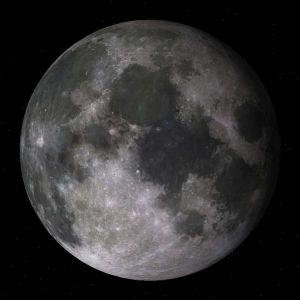Difference between revisions of "Moon"
Jump to navigation
Jump to search
m (Reverted edits by Dennis Krenz (Talk); changed back to last version by GW Simulations) |
Soumya-8974 (talk | contribs) |
||
| Line 1: | Line 1: | ||
[[Image:MoonScrshot.jpg|thumb|right|Moon in Orbiter]] | [[Image:MoonScrshot.jpg|thumb|right|Moon in Orbiter]] | ||
| − | The Moon is | + | The Moon is [[Earth]]'s largest natural satellite, and we usually see it in the night sky. Some other planets also have moons or natural satellites. |
| + | |||
| + | Our moon is about a quarter the size of the Earth. Because it is far away it looks small, about half a degree wide. The gravity on the moon is one-sixth of the Earth's gravity. It means that something will be six times lighter on the Moon than on Earth. The Moon is a rocky and dusty place. The Moon moves slowly away from the earth at a rate of 3.8cm per year, due to the effect of tidal dissipation. | ||
see also: Wikipedia [http://en.wikipedia.org/wiki/Moon] | see also: Wikipedia [http://en.wikipedia.org/wiki/Moon] | ||
Revision as of 06:37, 25 February 2019
The Moon is Earth's largest natural satellite, and we usually see it in the night sky. Some other planets also have moons or natural satellites.
Our moon is about a quarter the size of the Earth. Because it is far away it looks small, about half a degree wide. The gravity on the moon is one-sixth of the Earth's gravity. It means that something will be six times lighter on the Moon than on Earth. The Moon is a rocky and dusty place. The Moon moves slowly away from the earth at a rate of 3.8cm per year, due to the effect of tidal dissipation.
see also: Wikipedia [1]
Go to Addons for Moon
 | This natural satellite related article is a stub. You can help Orbiterwiki by expanding it.
|
